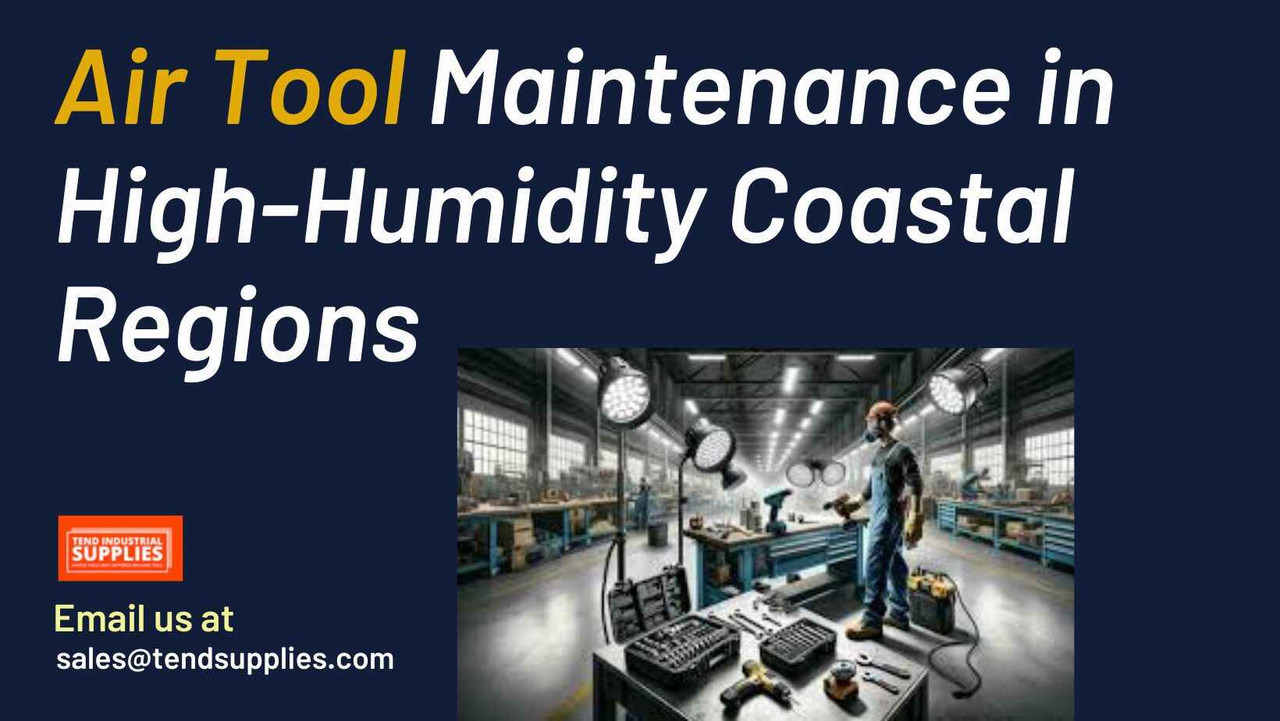Air Tool Maintenance in High-Humidity Coastal Regions
Key Takeaways
- Humidity control is critical for long-term tool performance
- Salt air requires specialized maintenance procedures
- Proper storage solutions prevent corrosion
- Regular maintenance intervals differ from inland recommendations
- Specific lubrication requirements for coastal conditions
Introduction
Maintaining pneumatic tools in coastal environments presents unique challenges due to high humidity, salt air exposure, and corrosive conditions. This comprehensive guide provides essential maintenance strategies specifically tailored for coastal regions where tool degradation occurs more rapidly than inland areas.
Understanding Coastal Challenges
The Impact of Coastal Environments
Coastal regions create particularly harsh conditions for air tools due to a combination of environmental factors. The salt-laden air contains microscopic particles that can penetrate tool mechanisms, while constant high humidity levels accelerate corrosion and internal rust formation. These conditions are especially severe within five miles of saltwater, where salt concentration in the air is significantly higher.
Temperature fluctuations in coastal areas create additional challenges, as warm days and cool nights lead to condensation inside tools. This daily cycle of moisture accumulation can quickly damage internal components if not properly managed. Studies show that tools in coastal environments can deteriorate up to three times faster than those used inland without proper maintenance.
Regional Humidity Variations
Different coastal regions experience varying levels of humidity impact:
Southeast Atlantic Coast:
- Average humidity: 70-80%
- Salt concentration: High
- Temperature range: 60-95°F
- Corrosion rate: Severe
Pacific Northwest Coast:
- Average humidity: 60-75%
- Salt concentration: Moderate
- Temperature range: 45-75°F
- Corrosion rate: Moderate to High
Gulf Coast Region:
- Average humidity: 75-90%
- Salt concentration: Very High
- Temperature range: 65-95°F
- Corrosion rate: Extremely High
Essential Maintenance Procedures
Daily Maintenance Protocol
Morning Preparation: Begin each day by thoroughly inspecting air tools for overnight moisture accumulation. Drain all moisture traps and filters in the air supply system before connecting tools. Apply a specialized coastal-grade tool oil to all moving parts, ensuring complete coverage of internal components.
End-of-Day Care: Implement a comprehensive cleaning routine that includes:
- Complete moisture removal from tool interiors
- Application of protective coating
- Secure storage in climate-controlled environment
- Inspection of all seals and gaskets
Weekly Maintenance Requirements
Comprehensive weekly maintenance should include detailed inspection and treatment of all tool components:
Internal Cleaning: Disassemble tools according to manufacturer specifications and clean all internal components with appropriate solvents designed for salt removal. Pay special attention to areas where salt deposits commonly accumulate, such as valve assemblies and motor components.
Protective Treatment: Apply specialized coastal-grade protective treatments to all surfaces, particularly:
- Moving parts and bearings
- External housing and seals
- Air intake ports
- Exhaust mechanisms
Moisture Control Systems
Advanced Filtration Solutions
Modern moisture control for coastal environments requires a multi-stage approach:
Primary Filtration: Install high-capacity water separators at the compressor output, capable of removing bulk moisture and larger particulates. These systems should be rated for coastal environments and equipped with automatic drains.
Secondary Protection: Implement point-of-use filters with specific features for coastal regions:
- Coalescent filtration capability
- Automatic moisture ejection
- Corrosion-resistant housing
- Regular maintenance indicators
Air Treatment Systems
Comprehensive air treatment becomes crucial in coastal settings:
Refrigerated Air Dryers: Install appropriately sized refrigerated air dryers to maintain dew points below ambient temperature. This prevents condensation formation within tool systems and air lines.
Desiccant Systems: Consider secondary desiccant drying for critical applications where ultra-dry air is required. These systems can achieve dew points as low as -40°F, virtually eliminating moisture-related issues.
Lubrication Requirements
Specialized Coastal Lubricants
Standard tool oils often prove inadequate in coastal environments. Instead, use lubricants specifically formulated for marine conditions that offer:
- Superior moisture displacement
- Salt neutralizing properties
- Extended protective film strength
- Corrosion inhibiting additives
Application Procedures
Proper lubrication in coastal environments requires more frequent application and specific techniques:
- Apply lubricant at the start of each work session
- Reapply during extended use periods
- Ensure complete internal coverage
- Use appropriate oil quantities based on humidity levels
Storage Solutions
Climate-Controlled Storage
Proper storage becomes critical in coastal regions. Implement storage solutions that include:
Temperature Control: Maintain consistent temperatures to prevent condensation formation. Storage areas should be kept between 65-75°F with relative humidity below 50%.
Dehumidification: Install dedicated dehumidification systems in storage areas to maintain appropriate moisture levels. Monitor humidity levels regularly and adjust systems as needed.
Frequently asked Question
1. How often should air tools be serviced in coastal regions?
Professional servicing is recommended every 3-4 months, with operators performing daily and weekly maintenance.
2. What type of lubricant is best for coastal environments?
Use marine-grade tool oils with corrosion inhibitors specifically formulated for high-humidity environments.
3. How can I prevent rust in my air tools?
Implement daily moisture removal procedures, use appropriate lubricants, and store tools in climate-controlled environments.
4. When should air tools be replaced in coastal regions?
With proper maintenance, tools should last 2-3 years, though this may vary based on usage and specific coastal conditions.
5. What are the signs of salt damage in air tools?
Look for white powder residue, excessive rust formation, and decreased performance or irregular operation.
Related Articles
- Best Practices for Maintaining Air Tools in Maryland's Humid Climate
- Seasonal Maintenance Tips for Air Compressors
- Air Tool Maintenance: Ensuring Efficiency and Longevity
- How to Maximize the Lifespan of Your Tools
- Advanced Air Tool Maintenance Tips
Take Action
Don't let coastal conditions compromise your air tool performance and lifespan. Contact Tend Industrial Supplies for expert guidance on maintaining your pneumatic tools in challenging coastal environments.
Contact us today:
- Email: sales@tendsupplies.com
- Visit: www.tendsupplies.com
- Browse our air tool maintenance supplies
Protect your investment and ensure optimal tool performance with proper coastal maintenance procedures and high-quality supplies.






